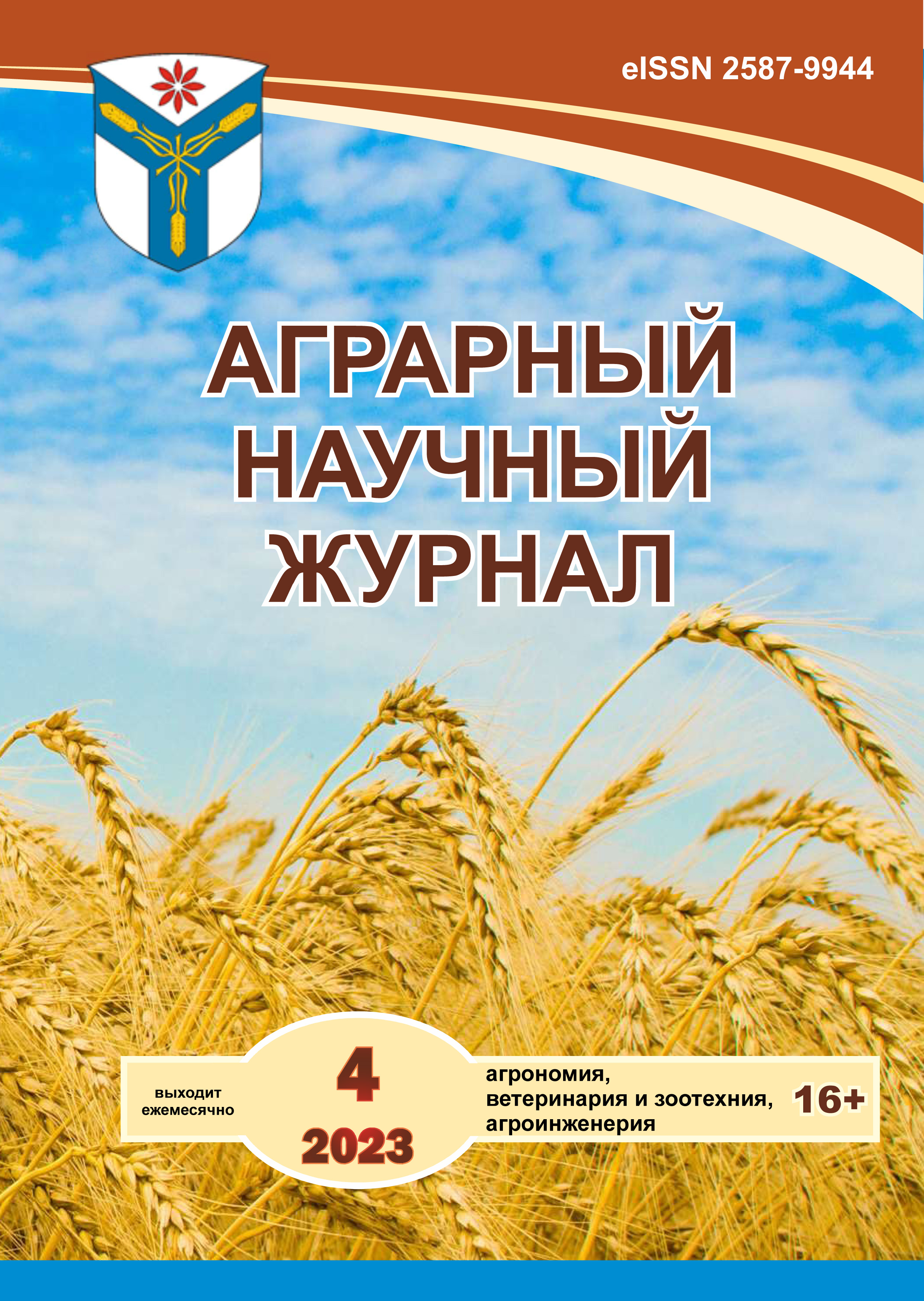Application of feed additives obtained from fish roe and glycerin in trout diet
DOI:
https://doi.org/10.28983/asj.y2023i4pp63-66Keywords:
amber trout, live weight gain, glycerin, pond fish milt, body condition index, fish body lengthAbstract
These studies were carried out in the Rostov region on the replacement and broodstock of amber trout in the second and fourth stages of maturity. The purpose of the work: to study the effect of newly developed feed additives from pond fish milt and glycerin on the performance of salmon fish. As part of achieving this goal, it is necessary to solve the following tasks: to analyze various proportions of pond fish milt and glycerin; carry out feeding of salmon fish from the second to the fourth stage of maturity; study the growth rates of fish. According to the scheme of the experiment, the first (control) group of fish received complete feed without additives. In the complete feed for the second experimental group, 2% glycerol was included by weight of the feed. The diet for trout of the third group included pond fish milt with glycerol 50 to 50% in the amount of 2.0% by weight of the feed. In the second stage of maturity, a significant increase in gross growth in the second and third groups by 13.5% and 14.4% (P<0.01) was found in relation to the control group. There was also a tendency to increase the length of the body in the experimental groups by 0.7 and 0.6 cm, respectively. The highest coefficient of fatness was in the group with 2% glycerol (6.97%). In the fourth stage of maturity, the trend towards a significant increase in gross growth continued. In the second experimental group, this indicator was higher than the control by 18.2% (P<0.01) and by 17.1% (P<0.01) in the third. The fatness coefficient in the control group was 1.74, in the second group it was significantly higher by 5.2% (P<0.01).
Downloads
References
Nutrition and feeding of rainbow trout (Oncorhynchus mykiss) / S.K. Biju et al. Indulkar (Eds.). Fish Nutrition and Its Relevance to Human Health. 2019;435:299–332, DOI: 10.1201/9781003107583.
Brezas A., Hardy R.W. Improved performance of a rainbow trout selected strain is associated with protein digestion rates and synchronization of amino acid absorption. Scientific Reports. 2020; 10:46–78. DOI: 10.1038/s41598-020-61,360-0.
Cai J., Leung P. S. Unlocking the potential of aquatic foods in global food security and nutrition: A missing piece under the lens of seafood liking index. Global Food Security. 2022;33:100–64.
Aquatic foods to nourish nations / C. D. Golden et al. Nature. 2021;598: 315–320, DOI: 10.1038/s41586-021-03917-1.
Feeding the river: the fate of feed-pellet-derived material escaping from land-based trout farms / R. Jean-Marc et al. Aquaculture. 2018;495:172–178. DOI: 10.1016/j.aquaculture.2018.05.050.
Effects on lipid oxidation and bioactive properties of rainbow trout fillets fed with Barley / J. Pinedo-Gil et al. Journal of Aquatic Food Product Technology. 2019;28(5):495–504. DOI: 10.1080/10498850.2019.1604596.
Effects of lowering dietary fishmeal and crude protein levels on growth performance, body composition, muscle metabolic gene expression, and chronic stress response of rainbow trout (Oncorhynchus mykiss) / L. Seunghan et al. Aquaculture. 2019;513:734435. DOI: 10.1016/j.aquaculture.2019.
Singh A. K. Emerging scope, technological up-scaling, challenges and governance of rainbow trout Oncorhynchus mykiss (Walbaum, 1792) production in Himalayan region. Aquaculture. 2020;518:734–826.
Symes D., Phillipson J. A sea of troubles: Brexit and the UK seafood supply chain. Marine Policy. 2019;102:5–9. DOI: 10.1016/j.marpol.2019.01.015.
Seafood availability and geographical distance: Evidence from Chinese seafood restaurants / Ch. Tian et al. Ocean & Coastal Management.2022;225:106–219. DOI: 10.1016/j.ocecoaman.2022.106219.
Downloads
Published
Issue
Section
License
Copyright (c) 2023 The Agrarian Scientific Journal

This work is licensed under a Creative Commons Attribution-NonCommercial-NoDerivatives 4.0 International License.








